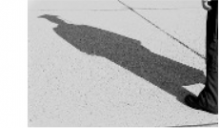 PhD defiense of Alessio TREBBI on 12/07/2022
PhD defiense of Alessio TREBBI on 12/07/2022


PhD defense of Alessio TREBBI from TIMC BIOMÉCA team on december, the 7th at 9am:
« Definition of a methodology to evaluate finite element models of the human heel for the prevention of pressure ulcers. »
-
Place : Salle des thèse (n°109) du Bâtiment Boucherle, Faculté de Médecine et Pharmacie de Grenoble, La Tronche
-
Broadcast link : https://youtu.be/5LR-Bd11MgI
 Jury
Jury
- Yohan PAYAN, Directeur de Recherche, CNRS, Supervisor
- Claude VERDIER, Directeur de Recherche, CNRS, Examiner
- Estevam LAS CASAS, Professeur, Universidade Federal de Minas Gerais, Reporter
- Amit GEFEN, Professeur, Tel Aviv University, Reporter
- Chiara Giulia FONTANELLA, Professeure assistante, University of Padova, Examiner
- Pascal PERRIER, Professeur, Université Grenoble Alpes, Examiner
 Keywords
Keywords
Pressure ulcer prevention, Finite element methods, MRI
 Abstract
Abstract
The costs associated with the management of pressure ulcers are considered to be very significant in many countries being on a scale of billions of euros. The prevalence of ulcers in hospitalized patients is around 10% with the heel and sacrum being the most common sites. These two body locations are substantially different in matters of anatomy, histology and loading configurations, for this reason, this thesis will specifically focus on the prevention of heel ulcers. Precisely, in a patient laying on his back, the mechanical forces, originating by the weight of his leg and the foot are transferred to the heel bone, the calcaneus, through a relatively thin layer of soft tissues which includes fat, skin, muscle and tendons. Over time, these internal strains in tissues and cells can cause tissue breakdown and start a pressure ulcer. Therefore, a solution to track internal strains and alert when their values are too high could contribute in the prevention of heel pressure ulcers. This is a complex task as it is not possible to measure directly the strains that occur in the deep layers of the body. Medical imaging, external measurements, and cadaveric dissections can each offer only a partial information required to fully understand the role of the internal structures. Hence the only possibility to measure real time strains that occur in deep layers resulting from loading applied on the skin surface are computational simulations. In this regard, finite element (FE) modeling is a technique that permits for prediction of the performance of structural and mechanical systems. These simulations provide useful clinical information which is difficult to measure with experimental procedures. In the last decade the first FE heel models started to be developed in order to simulate the stress propagation in the heel while the subject is laying on a bed or during gait. However, the intervariability in terms of tissue morphologies and mechanical tissue properties makes this a complex task requiring subject specific models. Additionally the heel is by itself a complex structure involving a specific structure, the heel pad, situated in the lower part, composed by different tissues with different mechanical properties in close contact between each other. FE models are complex simulations that require a consistent and robust methodology for validation through rigorous experimental measurements. In literature there are to main gaps to this purpose. First, the scarcity of experimental tests to define in vivo material properties of the human fat pad. In general researchers keep implementing in their current models parameters that refer to outdated studies made on ex vivo specimens. Second, little has been done little to establish the validity of FE models via experimental measurements. Usually data from previous studies in literature is used to compare the results of contact pressures and strain propagation in internal tissues. However, as all published studies suffer from the same limitations, they not provide any meaningful validation of the results.
This therefore leads us to the main research purpose of this thesis: «Definition of a new methodology to evaluate finite element models of the human heel for pressure ulcer prevention».
